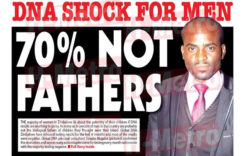THE Zimbabwe Electoral Commission (ZEC) has gazetted lists of candidates contesting the presidential, parliamentary and council elections on July 30.
This factsheet covers statistics and details around elections for members of parliament for the National Assembly.
AT A GLANCE

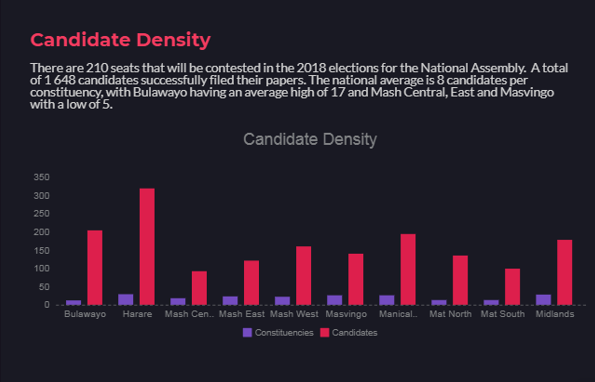
The most highly contested constituency in the country is Magwegwe, in Bulawayo, with 22 candidates. The least contested in that province is Emakhandeni-Entumbane which at 17, is still higher than the national average of 8.
The least contested constituencies are Mashonaland East’s Mudzi South, Mudzi West and Uzumba with 2 candidates each, as well as Chiredzi East in Masvingo.
A total of 47 parties have fielded candidates for National Assembly. ZANU-PF is fielding candidates in all the 210 constituencies while MDC Alliance is contesting in 207 except Hurungwe East, Chiredzi North and Insiza North.
MDC Alliance also has double candidates in at least 13 constituencies including Mabvuku Tafara, Mazowe North, Mazowe South, Mazowe West, Muzarabani North, Goromonzi West, Bikita East, Gutu Central, Gutu North, Gutu West, Masvingo South and Zaka West.
Where are the women?
There are 243 female candidates out of the 1,642 contesting. Of the 47 parties that filed to contest the national assembly seats, 20 fielded male candidates only, according to the Women in Politics Support Unit (WiPSU).
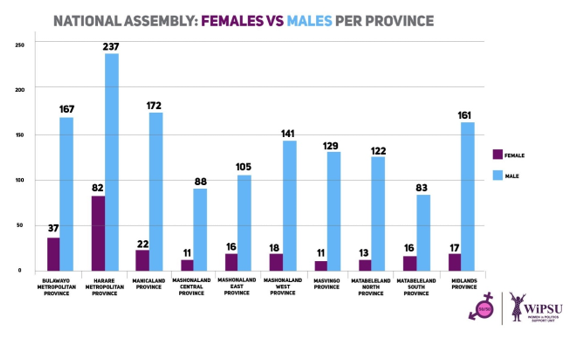
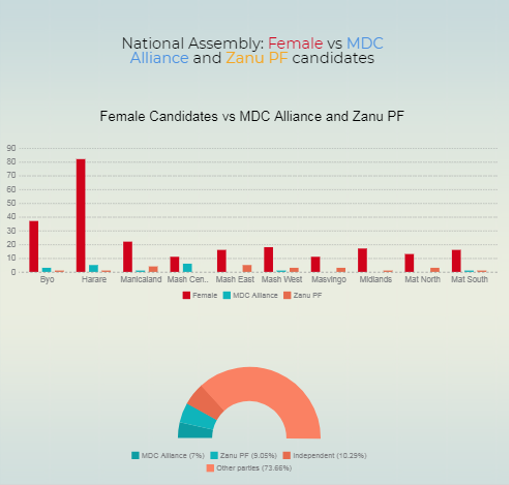
Of the parties currently represented in the National Assembly, MDC Alliance has 17 female candidates, ZANU-PF 22 female candidates, MDC T 22 and PRC with 27. There are 25 independents and the rest are from the other political parties.
Of the 247 independent candidates contesting, 10% are female.
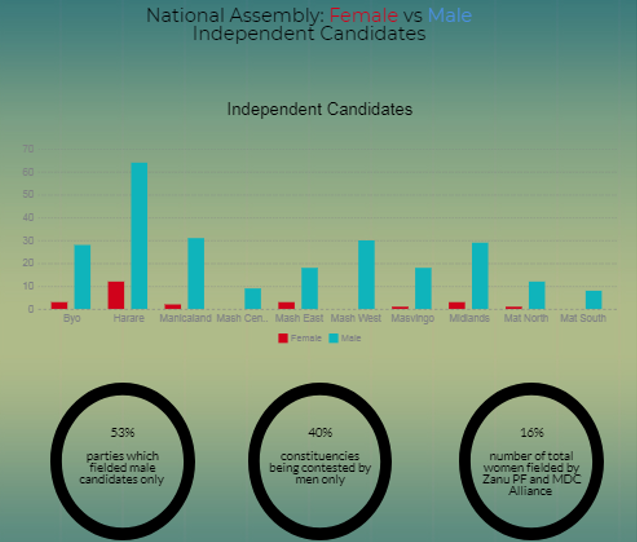
This is despite the provisions of section 17 of the Constitution which states that:
(1) The State must promote full gender balance in Zimbabwean society, and in particular—
(a) the State must promote the full participation of women in all spheres of Zimbabwean society on the basis of equality with men;
(b) the State must take all measures, including legislative measures, needed to ensure that—
(i) both genders are equally represented in all institutions and agencies of government at every level; and
(ii) women constitute at least half the membership of all Commissions and other elective and appointed governmental bodies established by or under this Constitution or any Act of Parliament; and
(c) the State and all institutions and agencies of government at every level must take practical measures to ensure that women have access to resources, including land, on the basis of equality with men.
(2) The State must take positive measures to rectify gender discrimination and imbalances resulting from past practices and policies.
Factsheet compiled by Lifaqane Nare
Do you want to use our content? Click Here











